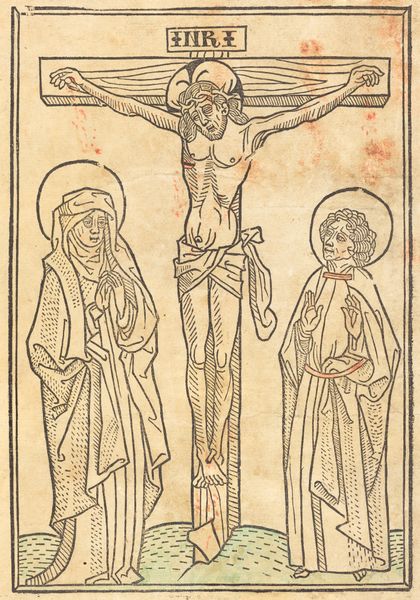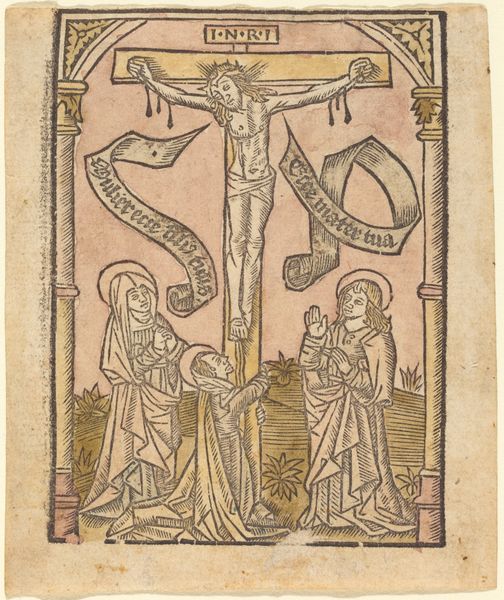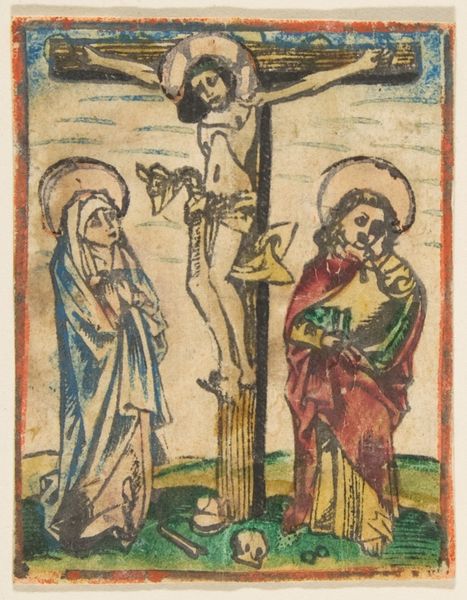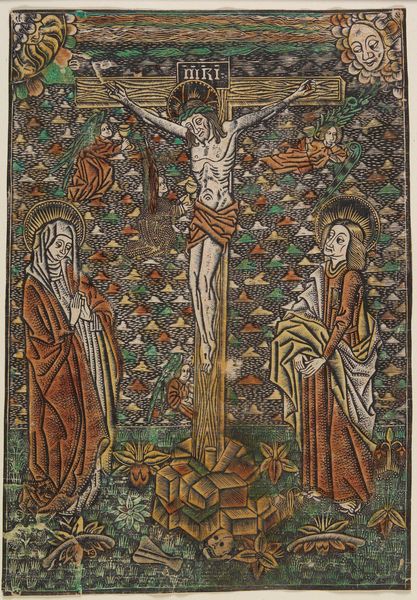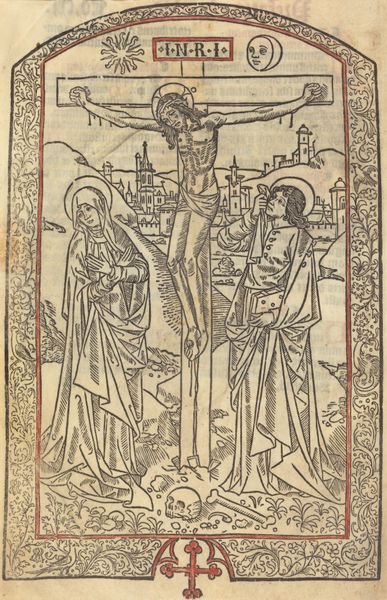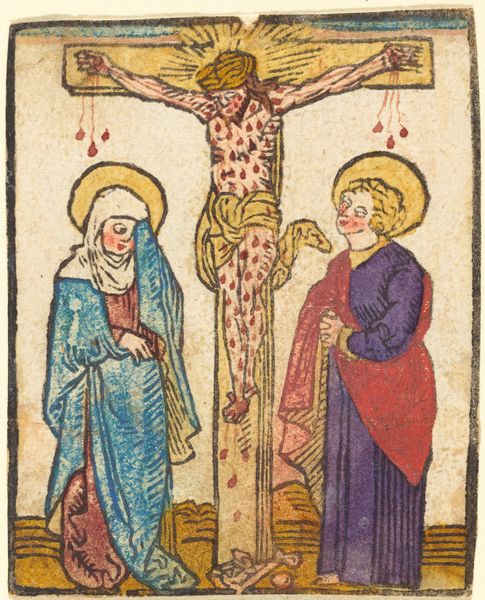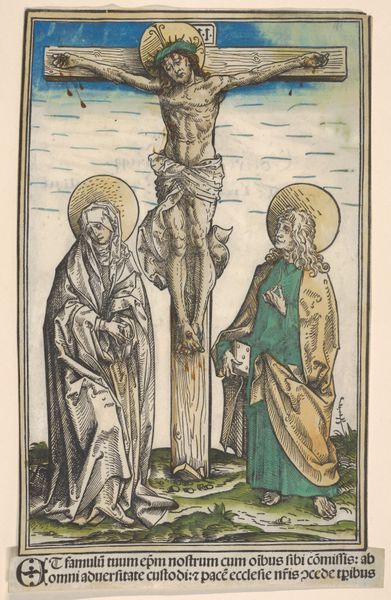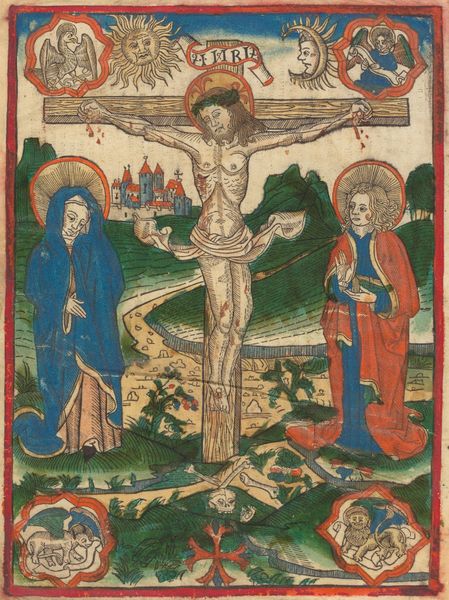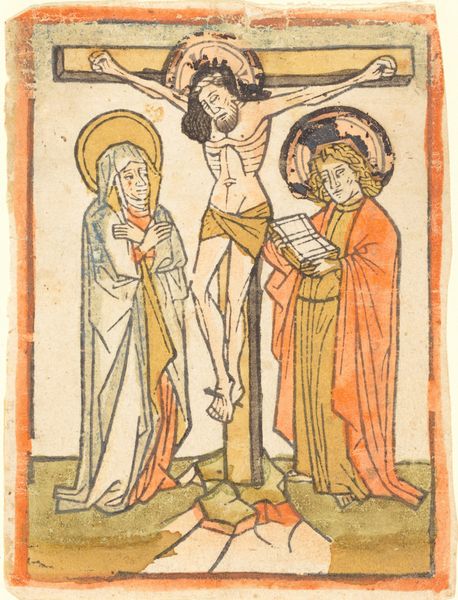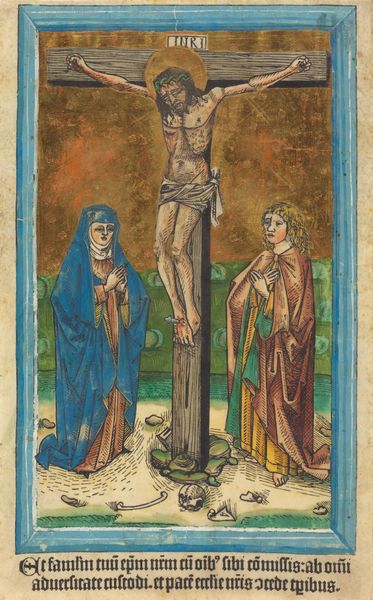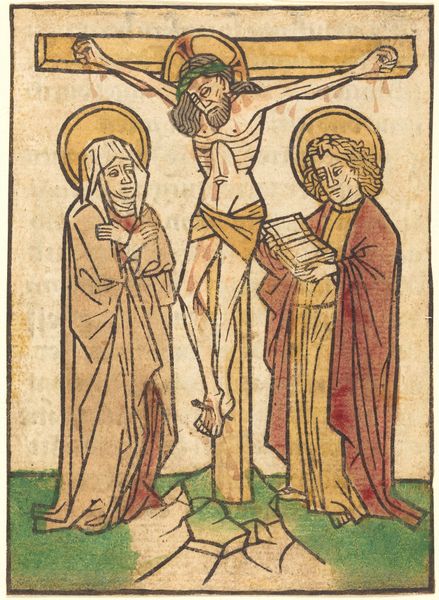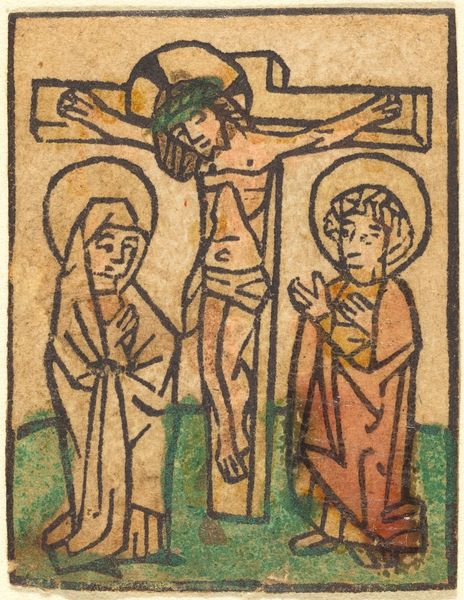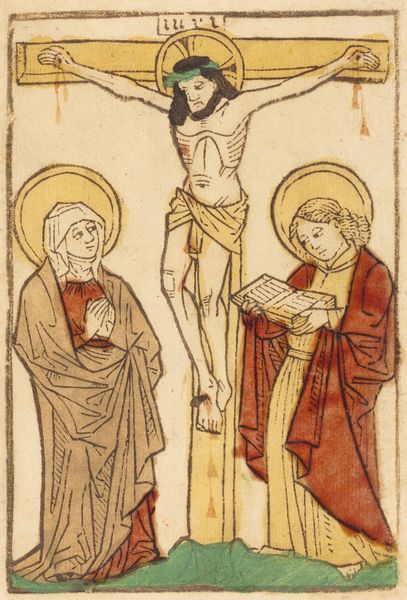
print, woodcut
#
medieval
# print
#
figuration
#
coloured pencil
#
woodcut
#
history-painting
Copyright: National Gallery of Art: CC0 1.0
Editor: Here we have "Christ on the Cross," a colored woodcut from the late 15th century. There's a stark, almost skeletal, depiction of Christ that feels quite raw. I’m curious, given your historical perspective, what strikes you most about a piece like this? Curator: Well, it's crucial to remember that prints like these served a powerful devotional function in their time. Consider the socio-political context of the late medieval period. This wasn't art for a gallery; this was mass-produced imagery circulated amongst the people, primarily those who could not afford other types of artworks. Editor: So, its accessibility impacted its meaning? Curator: Absolutely. These inexpensive prints brought religious narratives directly into homes and personal lives. The woodcut technique, with its graphic nature, communicated complex theological ideas to a wide audience, particularly the illiterate. What visual elements do you find compelling here? Editor: The figures to either side of the cross – the sorrowful expressions, the haloed heads, their garments. They reinforce the idea that the crucifixion was an important moment. Curator: Precisely. But more than just important - *central* - to their world. These prints encouraged private contemplation and identification with Christ's suffering. Now, consider how images like this shaped popular piety and potentially challenged or reinforced established religious institutions. This piece really highlights how art served as a potent tool for both religious instruction and personal connection in late medieval society. What do you make of that? Editor: That it shows that we can find meaning in the details as we delve into its historical purpose. Thanks for helping me look at this from a wider perspective. Curator: My pleasure! I also enjoyed learning about this today.
Comments
No comments
Be the first to comment and join the conversation on the ultimate creative platform.
